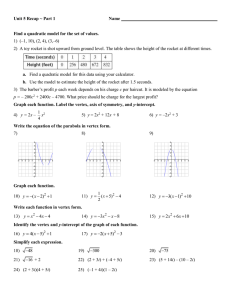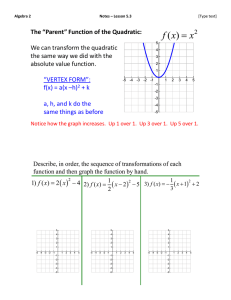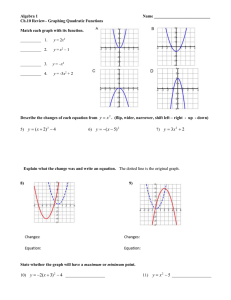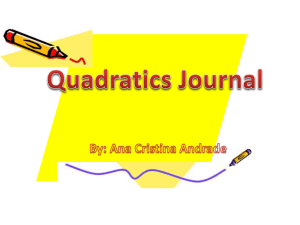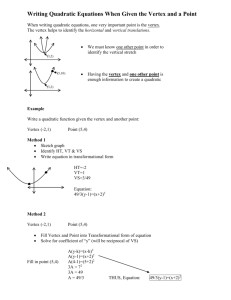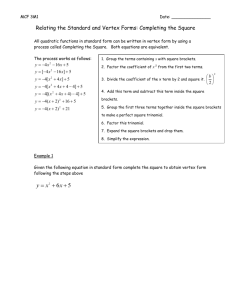Quadratics – Vertex Form
advertisement
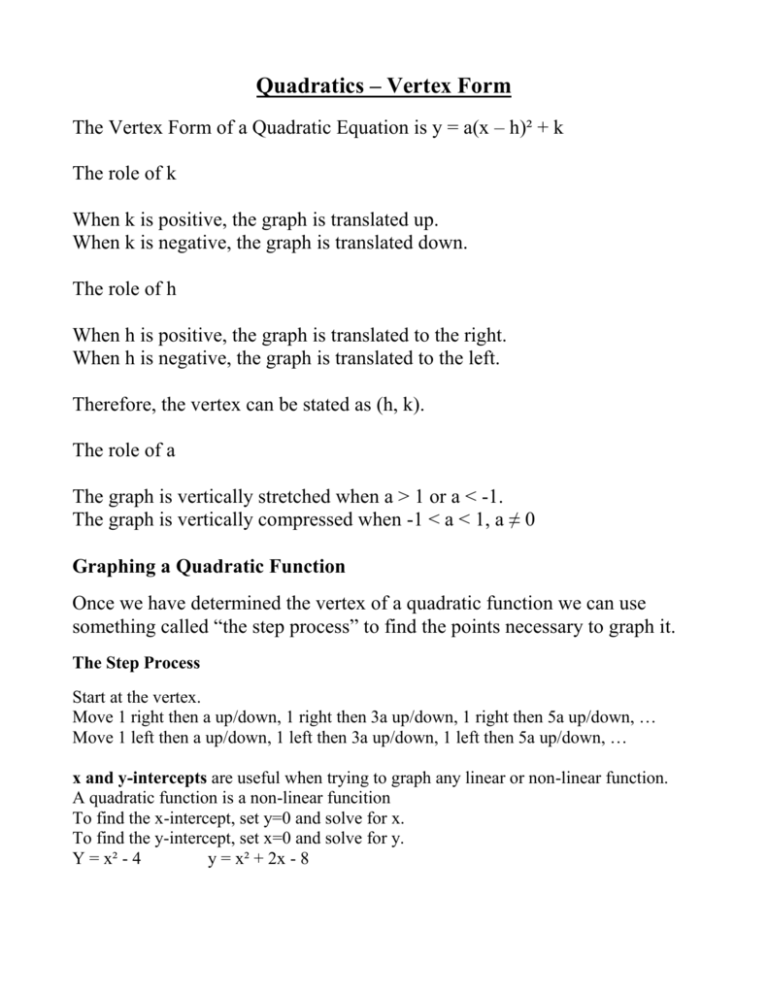
Quadratics – Vertex Form The Vertex Form of a Quadratic Equation is y = a(x – h)² + k The role of k When k is positive, the graph is translated up. When k is negative, the graph is translated down. The role of h When h is positive, the graph is translated to the right. When h is negative, the graph is translated to the left. Therefore, the vertex can be stated as (h, k). The role of a The graph is vertically stretched when a > 1 or a < -1. The graph is vertically compressed when -1 < a < 1, a ≠ 0 Graphing a Quadratic Function Once we have determined the vertex of a quadratic function we can use something called “the step process” to find the points necessary to graph it. The Step Process Start at the vertex. Move 1 right then a up/down, 1 right then 3a up/down, 1 right then 5a up/down, … Move 1 left then a up/down, 1 left then 3a up/down, 1 left then 5a up/down, … x and y-intercepts are useful when trying to graph any linear or non-linear function. A quadratic function is a non-linear funcition To find the x-intercept, set y=0 and solve for x. To find the y-intercept, set x=0 and solve for y. Y = x² - 4 y = x² + 2x - 8

